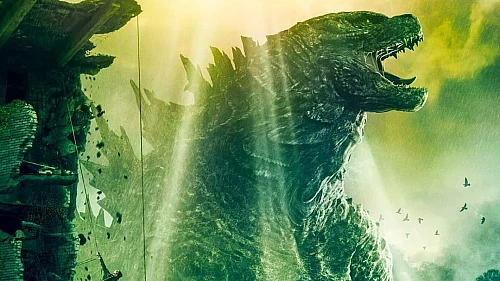This post was published by a guest. The views expressed are those of the author and do not necessarily reflect the views of godzilla-movies.com.
Monster movies might be known as a predominantly American genre, but the films that launched them were all Japanese, and it’s the Japan-born Godzilla franchise that seems to have left the deepest imprint on it. The original kaiju eiga (monster movie) has never left the global conversation and is still breaking new ground. Godzilla (1954) began a legacy that spanned six decades and changed not just monster movies but also how they were made, consumed, and appreciated worldwide.
1. Godzilla (1954)
It was the original Godzilla (1954), directed by IshirÅ Honda, that laid the foundation for all kaiju to come. Godzilla grew out of the fears of post-war Japan and a sense of nuclear dread. This film had a somber tone, featuring the creature that was awakened by nuclear testing. It pioneered special effects for the time and carried a decidedly anti-nuclear message that rose above simple creature-feature fare. The movie didn’t just start a franchise; it spawned an entire genre, with filmmakers ranging from Merian C. Cooper to Gareth Edwards exploring the themes of nature versus humanity and the dangers of scientific hubris.
This is but the first in the whopping 38 movies about Godzilla. If you want to appreciate this franchise fully, you will need many free hours to host an ultimate movie marathon. Hire a No.1 essay writing service to write your essays while you freely enjoy this cinematic experience. TopEssayWriting can handle any paper, regardless of the deadline.
2. Mothra vs. Godzilla (1964)
Another classic is Milla (1964), another example of the series’ elasticity in terms of allowing Godzilla to be infused with other kaiju: the film is largely an eco-allegory of coexistence, with Godzilla pitted against another Toho-produced kaiju, Mothra. The film’s portrayal of Godzilla as an unstoppable natural disaster and Mothra as a ‘divine’ protector spoke to the possibilities of kaiju cinema mounting more serious narratives, changing how monster movies of the time were able to use big destruction tropes to explore human stories.
3. Godzilla vs. Hedorah (1971)
Godzilla vs Hedorah, also known as Godzilla vs the Smog Monster, took a bolder ecological stance than the earlier films. It appeared in 1971, on the heels of the emergent global environmental movement, and it used the pollution-born Hedorah as an opportunity for its creators to showcase themes of ecological damage. This is actually a great subject for a college paper. There are also many other great ideas for case study projects on TopEssayWrtiting, so don’t miss out. Godzilla vs. Hedorah anticipated the modern cinematic hero who would rescue humanity from ecological disaster, altering the thematic trajectory of the monster film.
Godzilla, Mothra, and Hedorah are one of the many famous Japanese monsters. The others worth noting are as follows:
- Rodan - A massive pterosaur from the 1956 film.
- King Ghidorah - A three-headed dragon, Godzilla’s formidable foe since 1964.
- MechaGodzilla - A robotic version of Godzilla introduced in 1974.
- Gamera - A giant, flying turtle, popular among younger audiences since 1965.
- Biollante - A genetic hybrid of Godzilla and a plant from the 1989 film.
- Destoroyah - Born from a weapon that killed Godzilla, featured in 1995.
4. Godzilla (1998)
The 1998 American remake of Godzilla, directed by Roland Emmerich, was arguably the first real attempt to ‘Americanise’ the monster. However, the film was criticized and considered a failure despite making over $300 million at the box office. And yet, it has a significant place in the global evolution of Godzilla, demonstrating some of the challenges of adapting a culturally specific icon for global audiences, as well as a crisis in special effects, with the film’s wide use of CGI demonstrating the possibilities of a new technology of rendering enormous-scale destruction, which has become a mainstay of monster cinema today.
5. Godzilla (2014)
Gareth Edwards brought Godzilla back to its beginnings with a film full of monstrous reverence in 2014. Because of this film, a new wave of large-scale monster movies re-emerged. This box-office smash reintroduced Godzilla as the unstoppable force of nature, re-defined the human-monster relationship, and gave monster movies a new lease of life. It incorporated contemporary special effects but also focused on human perspectives. Edwards’s Godzilla was a defining moment in the history of the monster movie, and it led to the creation of the Legendary Pictures’ MonsterVerse – a cinematic world in which classic monsters would be remixed with modern cinematic effects and stories.
The Titan of Monster Cinema
If there’s one thing that the Godzilla films have always been better at than other monster movies, it’s entertaining people. This creature has millions of fans worldwide. However, Godzilla has also been industrious in defining the monster movie genre itself. From how we meet kaiju to the use of special effects and the narrative complexity that’s grown around it, Godzilla movies are definitely a cultural phenomenon. The franchise’s legacy is such that Godzilla remains the grandest monster to date and truly a cinematic icon.

What’s Next for Godzilla? Fan Theories, Rumors, and Upcoming Movies
Godzilla is one of the most famous movie characters of all time. The King of the Monsters has been a huge hit with fans since his first debut in 1954....
Explore Multiple Art Styles Instantly with AI Avatar Maker
Digital self-expression is more graphic than ever. Your personal presentation online is usually determined by your choice of style that influences how...

Could You Survive a Kaiju Attack? A Student’s Guide to Emergency Preparedness
The campus buzzes with lectures, deadlines, and the occasional late-night study session. But what if, amidst this academic routine, a seismic tremor r...




